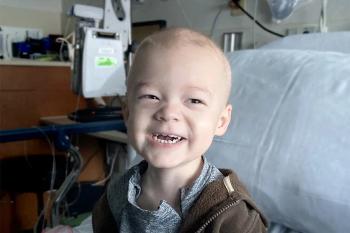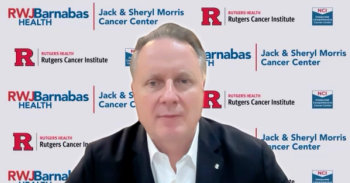
Demonstrating AI's Value in Lung Cancer Diagnosis: Samir Shah, MD, MMM, FACR
With potential lung cancer nodules sometimes slipping through the cracks, educating stakeholders about artificial intelligence (AI) that can catch nodules early could be helpful in cancer treatment.
Samir Shah, MD, MMM, FACR, chief medical officer of Qure.ai, spoke about his work with the company, which informs stakeholders about the benefits of artificial intelligence (AI) in radiology, specifically in catching nodules that could turn into lung cancer.
This transcript has been lightly edited for clarity; captions are auto-generated.
Transcript
How is Qure.ai working to help bring more AI solutions to health care sites across the globe?
We've been working with multiple teams. We work with radiologists, of course, because they're using the software in their workflow, but the results also get conveyed to the lung cancer screening program and incidental pulmonary nodule program at hospitals. Those are typically run by pulmonologists and thoracic surgeons. So we really need all 3 clinical stakeholders to understand the use of the software, champion the software, and then we bring it to the administration of the hospital, and we bring it to the IT [information technology] team, and there's an implementation process.
But the first thing that has to be understood is, what is the benefit going to be to the health system? We explain that benefit, because, very simply, the earlier we find a lung cancer, the more patients that can actually be treated. And that's the benefit for the health system is they can treat more patients, they can keep track of more patients. Losing patients is a huge problem. Right now, if a radiologist did find a nodule on an emergency room [ER] patient that was there for some other reason, the likelihood that that message went from radiologist to ER to primary care to actually follow that nodule is very low. It's actually less than 50%. It's probably 60% likelihood of losing that information.
So we really need a better system in the US, because so much of information is overloading the system and it's not followed well. So really, that's kind of how we talk to the health system, with multiple teams engaged. And then there's actually a lengthy process that we get installed, but once we're installed, we're really kind of invisible to the radiologists' workflow. We don't slow them down. We don't bother them in any way. We give them an audible and visible alert when the AI says, "Hey, take another look. We think we found a nodule." And the radiologist can agree or disagree, and it's not done after the fact, or anything else, it's done right at the time that the radiologist is reading the case.
Newsletter
Stay ahead of policy, cost, and value—subscribe to AJMC for expert insights at the intersection of clinical care and health economics.













































